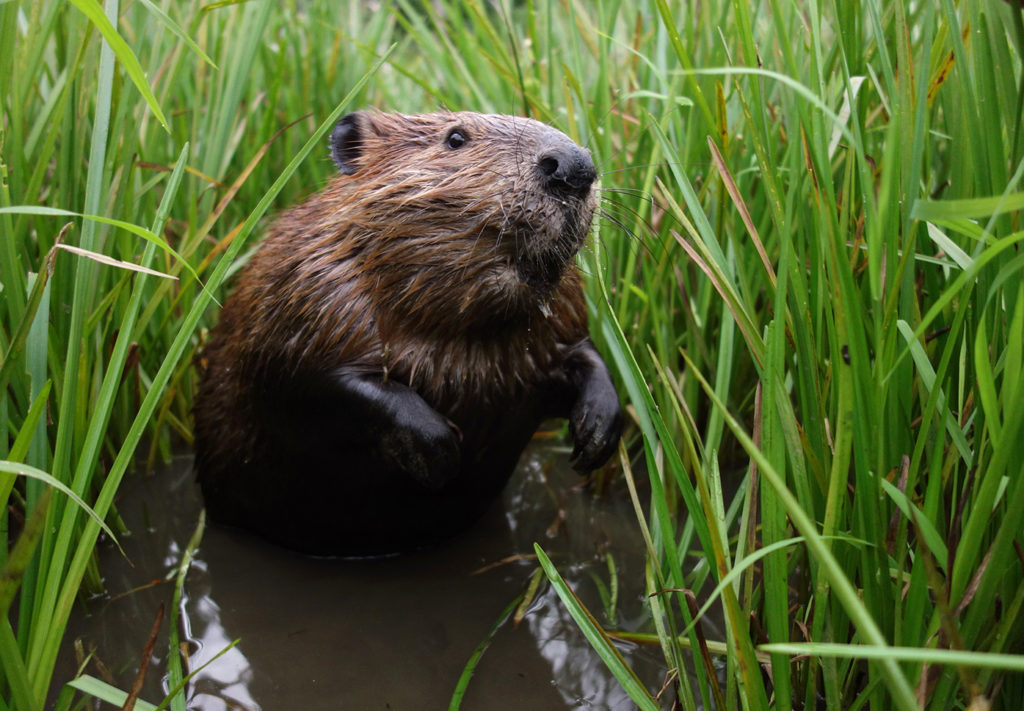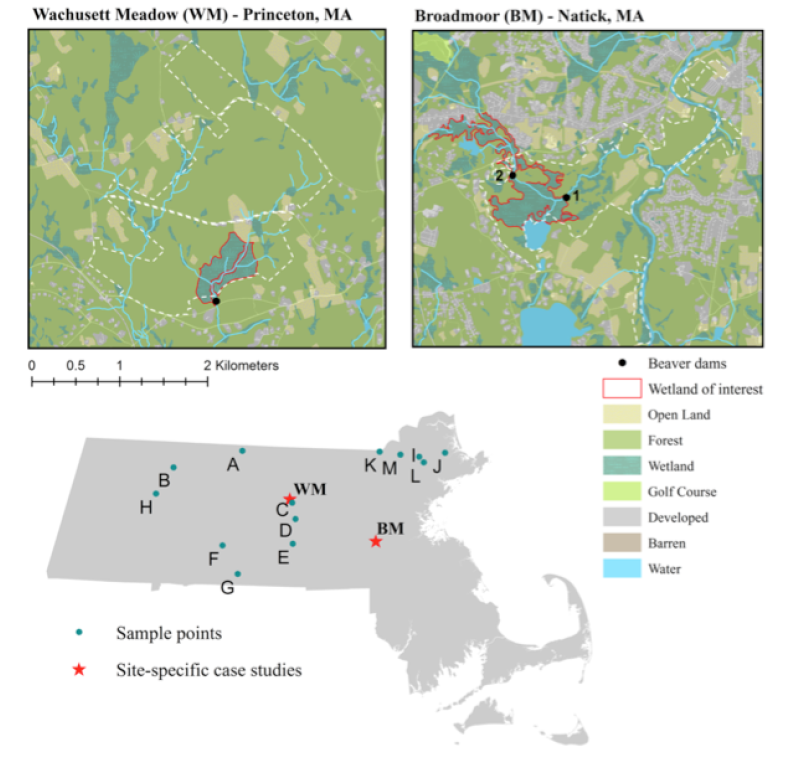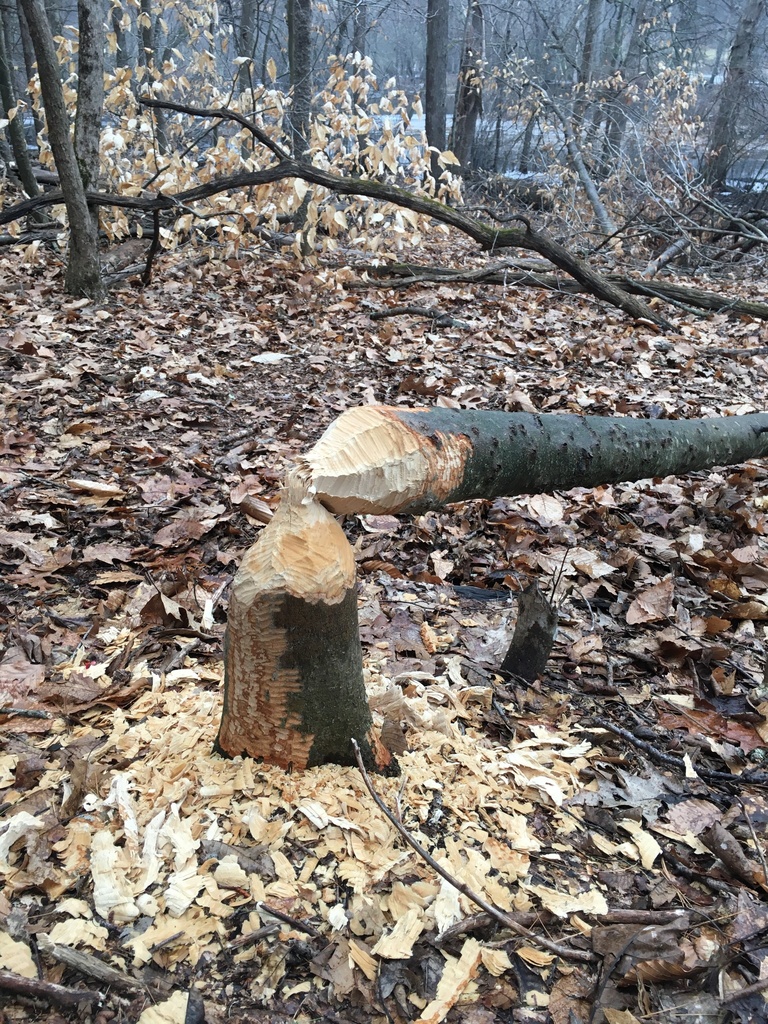Mass Audubon and the Boston NASA DEVELOP National Program team are collaborating to learn more about how Massachusetts beavers impact the landscape using satellite imagery, and we need your help.
The NASA DEVELOP National Program addresses environmental and public policy issues through interdisciplinary research projects, applying NASA Earth observations to community concerns around the globe. Teams of DEVELOP participants partner with decision-makers to conduct 10-week rapid feasibility projects, highlighting relevant applications of NASA Earth observing missions, cultivating advanced skills, and increasing understanding and use of NASA Earth science data and technology. The DEVELOP Program conducts 55-65 projects annually across 11 national locations. This spring, the DEVELOP Boston team is partnering with Mass Audubon to explore how beavers influence the Massachusetts landscape.

A Conservation Success Story
The beaver (Castor canadensis) is North America’s largest native rodent. They are adapted for aquatic environments and easily recognizable by their long, flat tail and sharp front teeth.
European colonists found beaver’s thick, waterproof fur highly desirable and decimated their populations across the U.S. Unregulated trapping, deforestation, and the destruction of wetlands led to the local extinction of beavers in Massachusetts by the end of the 18th century.
In one of the most successful conservation efforts in U.S. history, New York reintroduced approximately 20 beavers from Canada and Yellowstone in 1904. By 1915, the population exploded to about 15,000 individuals and began to disperse to surrounding states. In 1928, beavers were discovered in West Stockbridge, the first recorded occurrence in Massachusetts since 1750.
To support Massachusetts populations, Mass Audubon’s Pleasant Valley Wildlife Sanctuary reintroduced three additional beavers in 1932. Today, beavers have been restored to nearly their entire historic range throughout the state, found everywhere except Cape Cod.
Busy Beavers Build Habitat
Beavers are known as ecological engineers. They alter and create new habitats by building dams from sticks and mud to create still, deep ponds. These ponds provide beavers with access to food, protection from land predators, and shelter.

By building dams and creating ponds, beavers restore lost wetlands, of which about half have disappeared in the lower 48 states since European settlement. Beaver ponds are home to rich biodiversity, including amphibians, reptiles, spawning fish, muskrats, bats, various birds, and a wide variety of plants.
Altering the hydrology helps control downstream flooding, improve water quality, trap silt, and resupply groundwater. When the dam is abandoned and the pond drains, nutrient-rich silt creates highly productive meadows. However, beaver dams may cause unwanted flooding to neighboring properties, but can be mitigated through various solutions.
Tracking Beavers from Space and on the Ground
The spring 2020 Boston NASA DEVELOP team is using NASA satellite imagery to find and track beaver flooding events across Massachusetts to see how their populations are impacting landscapes. The team will be corroborating potential beaver flooding using iNaturalist beaver observations. iNaturalist is an online citizen science platform, where users upload and identify species observations (images or audio recordings).

How You Can Help
Help Mass Audubon and the NASA DEVELOP team by reporting beaver signs, including dams, lodges, chewed logs, or beaver themselves using iNaturalist, either in our sanctuaries or anywhere across Massachusetts.

Written by Cameron Piper, TerraCorps Service Member

